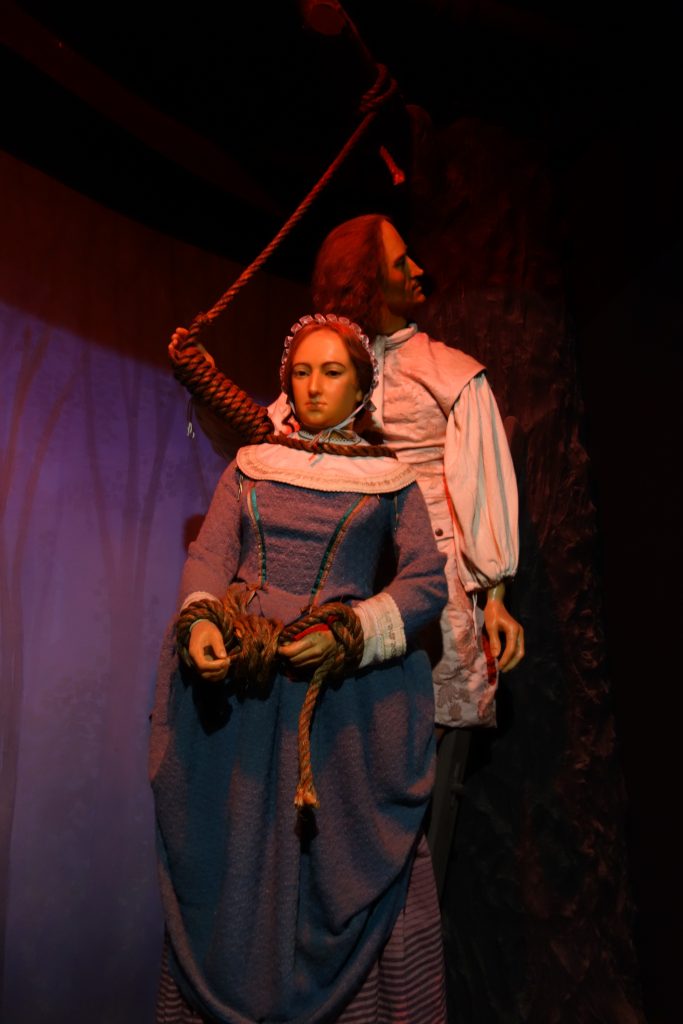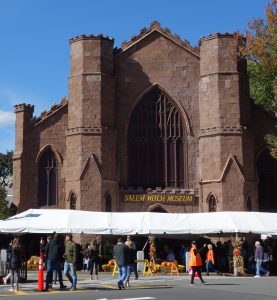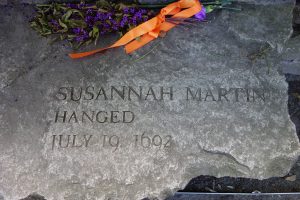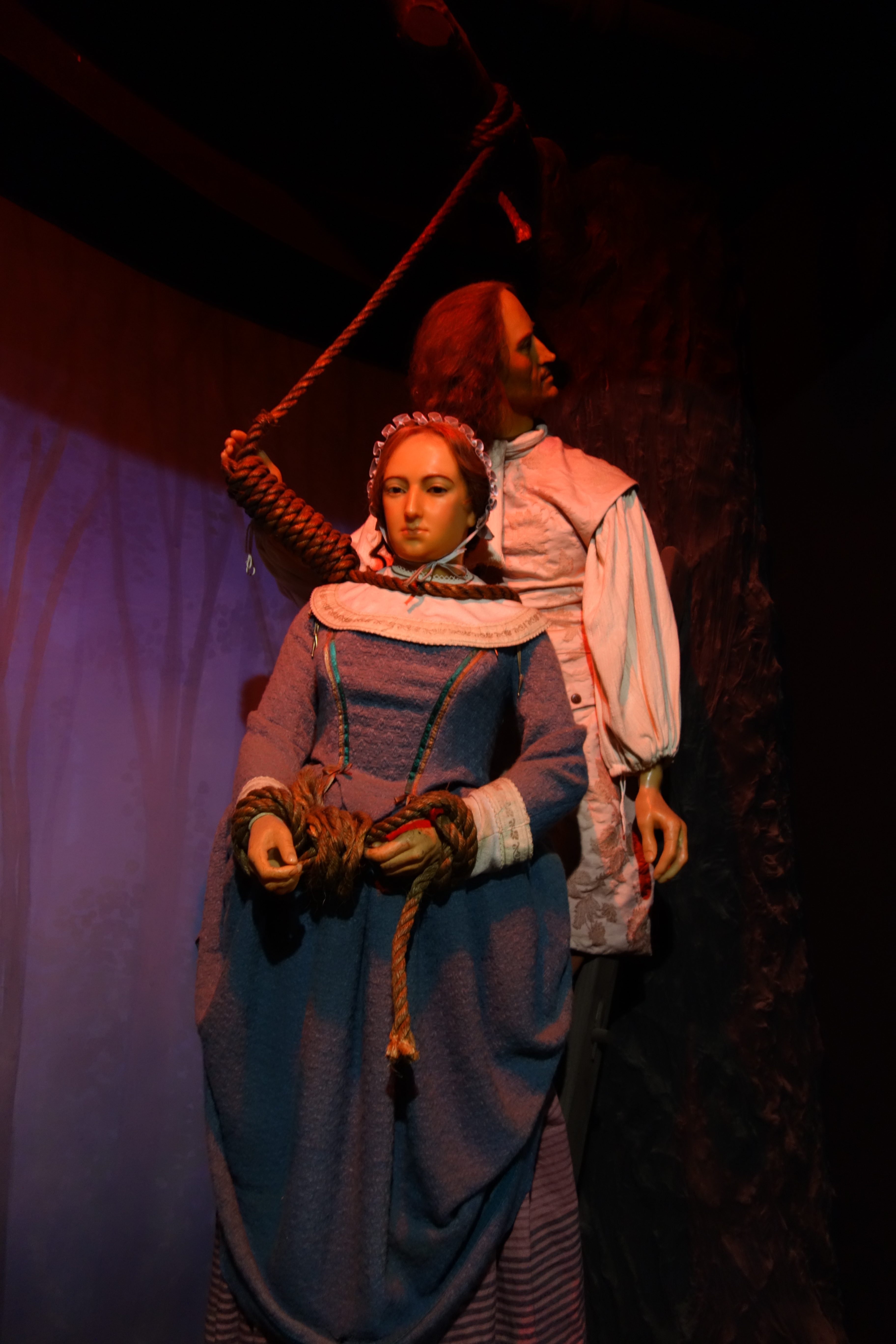
“It didn’t occur to me until I was writing it that it deals with people who are different from us. Do we want to understand or destroy them? It’s easy to find a segment of the population you don’t like.”
Even before America became the United States, it was all too easy to find a group of people who could be identified as evil. This took a deadly turn in the infamous year of 1692 in Salem, Massachusetts when both women and men were executed in public. Why? Because they were witches.
I visited Salem this October to see for myself what it was all about, and despite the natural tendency for Salem to capitalise on its notorious past, I found much history about the witch trials there to be told in a sombre and factual manner.

From there visit the memorial that was built in 1992, the 300th anniv of the trials. It is a low-key commemoration: you walk along a large outdoor rectangle and look down to see stone slabs, one for each victim. It is placed adjacent to the old burial site, which has many spooky tombstones from the 17th and 18th centuries.

At the excellent Wax Museum, one can see a series of dioramas up close, one of which features Justice Hathorne. Others show witches on trial, or being hanged. One of these is Bridget Bishop, the first to hang: her fate is shown in the lead photo of this article. Also not to be missed at the Salem Witch Village is a good witch who casts spells. It’s a particularly soothing introduction to modern witchcraft that can be enjoyed by all, no matter what your religious beliefs.
Visit the websites for details on visiting. Lines can be long, with wait times of two hours at each venue, so plan on a full day in Salem:
salemwitchmuseum.com
salemwitchvillage.biz
7gables.org
Photos with this article, taken Oct. 2018, by C. Cunningham
